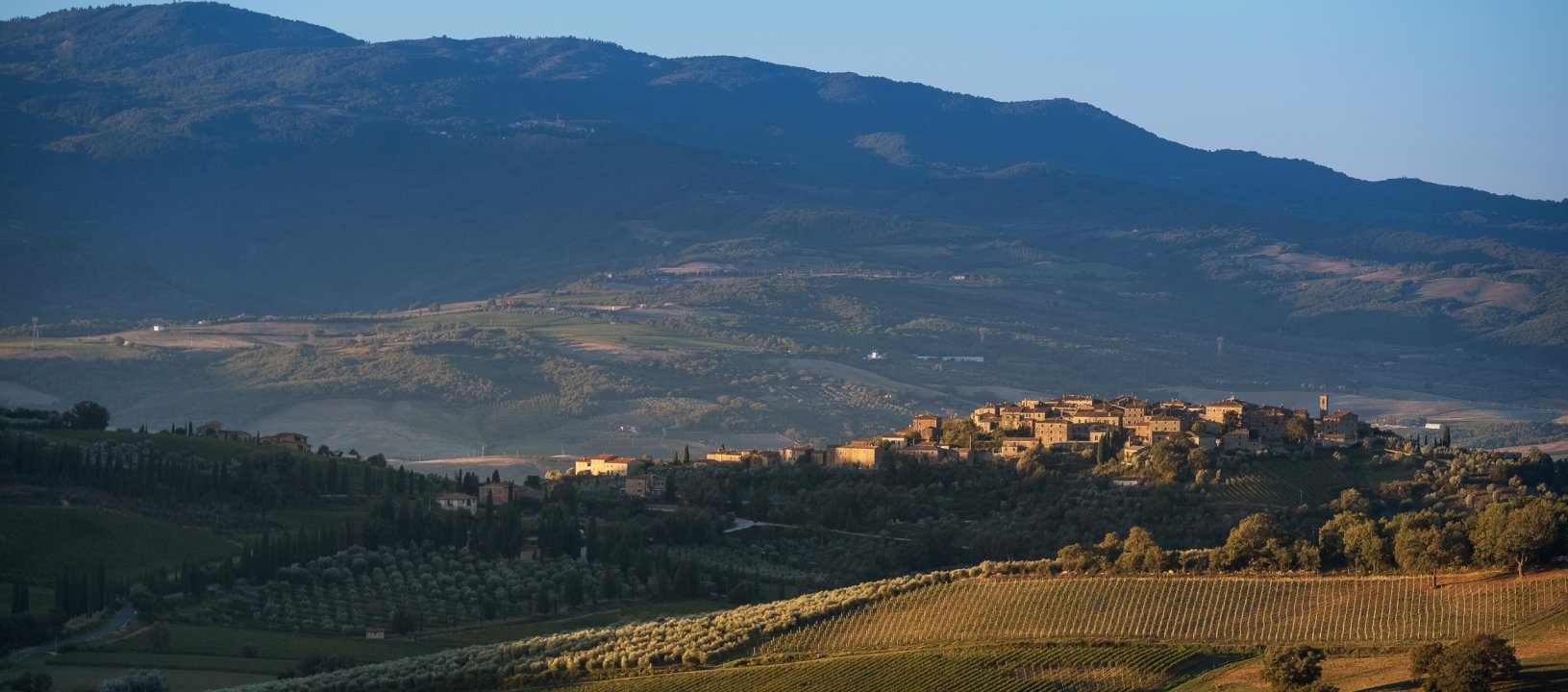Contacts
Località Podernovi 161
53024 Montalcino
Siena
Tour & Tasting:
phone +39 346 3123036
ospitalita@poggiosanpolo.com
Info generali:
tel. +39 0577 835101
info@poggiosanpolo.com
Where we are
Beautifully Brunello
A journey through time to the grand fourteenth-century fortress towering over the town. From here the view encompasses a territory unique for its beautiful landscape, the fame of its wines, and centuries of history.
Welcome to Montalcino.
Montalcino is at the top of a hill 570 meters (1870 feet) above sea level and around 45 km (28 miles) from Siena. Bordered by the valleys created by the Orcia, Asso, and Ombrone rivers, it is one of the largest municipalities in Italy, and has an almost circular shape with a diameter of 16 km (10 miles) and an area of 243 km2 (94 square miles). Located 100 km (62 miles) west of the Apennines and 45 km (28 miles) to the east of the Tyrrhenian Sea, it is protected to the south by the peak of Mount Amiata. Montalcino’s hill, formed in different geological eras, has extremely variable soil characteristics both in constitution and structure. There are fairly loose soils at lower elevations, with a rather deep active layer that originated in the Quaternary period from the transport of waste. Uphill, the soil is formed by the decomposition of rocks (galestro and alberese) and has a smaller active layer.

Amiata’s embrace
The nearby Monte Amiata functions as a natural barrier to bad weather and even responds with subsequently triggered currents which have an ensuing influence on moderate rainfall. Slopes with varying orientations, steep inclines, and the difference in elevation between the valleys and the higher areas create very different microclimates despite their close proximity.
The climate of the area is typically Mediterranean and tends to be dry, however there can be some continental influence given Montalcino’s position between the sea and the Central Apennines. Rainfall is concentrated in the spring and late autumn months, with an average of 700 mm (28 inches) per year. Snowfall is not uncommon above altitudes of 400 m (1312 ft) in winter. The average annual temperature is 15 ° C (59 ° F), with averages in spring and summer of 18.5 ° C (65 ° F).
